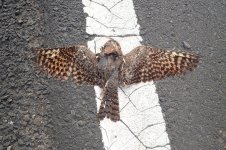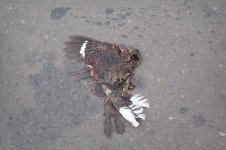Andy Adcock
Worst person on Birdforum

Apologies for the nasty images, just hoping to confirm ID's if possible.
These were taken on the road near the Uwinka, lookout point at Nyungwe. This road is in the process of having lights installed and this was on a lit section so these birds may be early casualties of this?
I think the first, plare one is Montane (Ruwenzori) and the other, Black-shouldered which annoyingly, we didn't see alive.
These were taken on the road near the Uwinka, lookout point at Nyungwe. This road is in the process of having lights installed and this was on a lit section so these birds may be early casualties of this?
I think the first, plare one is Montane (Ruwenzori) and the other, Black-shouldered which annoyingly, we didn't see alive.





